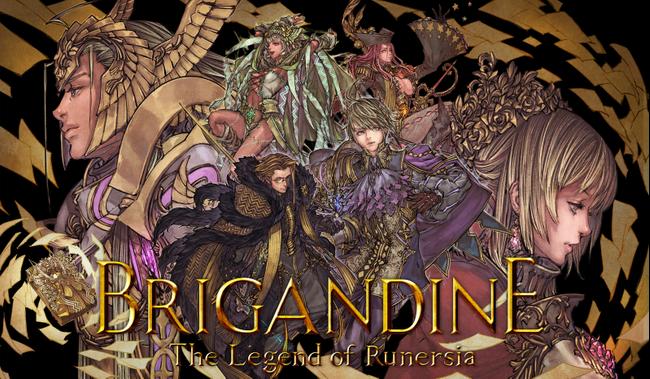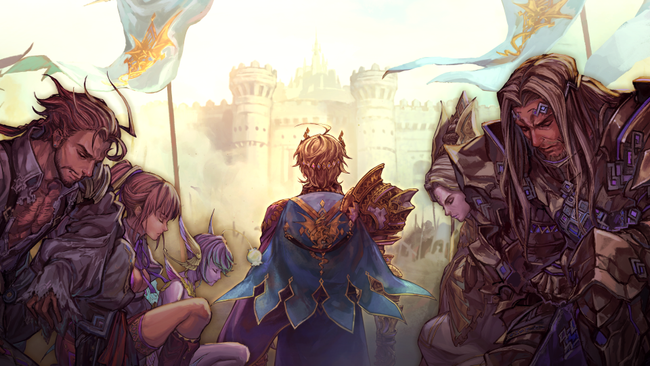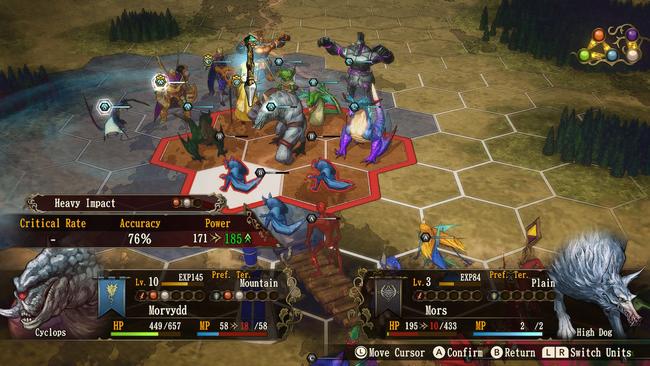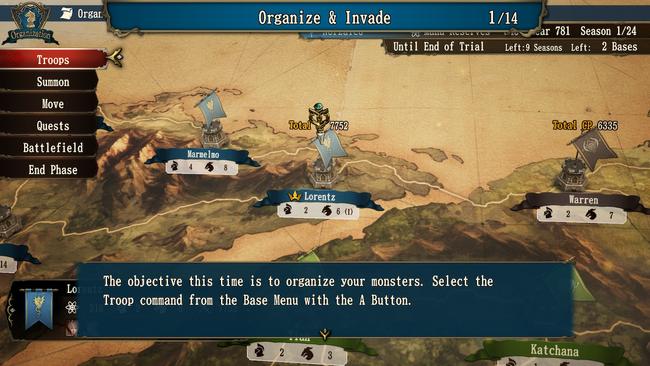
Brigandine: The Legend of Runersia Interview - Talking Strategy and Substance with designer Kazuhiro Igarashi
Brigandine: The Legend of Runersia is an interesting looking strategy game set to release exclusively for Nintendo Switch next week on June 25. Featuring striking art by Raita Kazama and some intricate strategy elements, it's certainly a game that's caught our eye at RPG Site.
Ahead of its release, we had a chance to ask some questions to producer and game designer Kazuhiro Igarashi about how this project came to be.

RPG Site: Though the original Brigandine game on PlayStation is a bit of a cult-classic, Brigandine is not otherwise widely known in the west. So to start, what is Brigandine?
Kazuhiro Igarashi: Actually, I’d like to start by saying: Thank you, RPG Site for this opportunity to share more about our project.
Simply put, Brigandine is a turn-based strategy game set in a fantasy world. The player chooses from one of six nations on a continent when starting the game. The goal is to capture all 41 bases and unify the continent after a period of war. There is a powerful force called "Mana" that can be used by over 100 Rune Knights. Some of them serve a nation, while others are out there, waiting to be recruited. As ruler of one of the six nations, you fight enemies with troops of Rune Knights and monsters on a hex-map battlefield.
While we’ve evolved Brigandine, fans can rest assure that these elements were carried over from the original PlayStation game:
- A story that plays out differently depending on which of the six nations you choose to play as;
- a detailed background and storyline for each of the six nations, six rulers, and 100+ Rune Knights;
- a sandboxstyle game design where enemy nations (CPU opponents) gain experience at the same rate as the player, resulting in different developments every playthrough;
- simple, yet involved, turn-based hex-map battles with knights and monsters;
- thoroughly developed worldbuilding, a high volume of playable hours, and plenty of replay value.
We also have Kenji Terada on scriptwriting [Final Fantasy I – III] and Raita Kazama on art and character design [Xenoblade, Xenoblade Chronicles X] leading an all-new creative team to breathe new life into this series after a 20-year wait.
RPG Site: How does Brigandine set itself apart from other strategy games?
Igarashi: The use of knights and monsters for combat units with vast potential for development is a big part of what makes Brigandine unique. The battles are turn-based combat between 3 troops on each side, taking place at one of the bases located at different parts of the continent. There are over 60 different classes of Rune Knights, who act as leaders of the troops, and over 50 types of monsters who make up the rest. And as the knights and monsters gain battle experience, it becomes possible to build on them with class changes and over 500 items.
You will need to decide which bases you will claim for which nation, how will you ready your knights and monsters for battle, and what route to take on the battle map. With this amount of freedom, as you progress through the battles, your knights and monsters will develop quickly. You can’t help but want to take on new bases with your stronger units and new classes of monsters! This satisfying rhythm found in doing battle and developing characters is very much a characteristic of the game.
RPG Site: How did developing The Legend of Runersia come about, to begin with, more than 20 years after Legend of Forsena (the PlayStation game)?
Igarashi: I began working at Happinet when Forsena was released 22 years ago by E3 STAFF [a subsidiary of Happinet]. I was so impressed by Forsena, I dreamed of joining the team and working on the series. The E3 STAFF team disbanded but my chance came again when the game development division reopened and it’s a dream come true! From there, I set forth to assemble a team that I believed could bring my vision of Runersia to life.

RPG Site: Why was the decision made for The Legend of Runersia to be released worldwide on Nintendo Switch?
Igarashi: While Brigandine: Grand Edition was never released in the West, we were aware it and Brigandine: The Legend of Forsena still had a strong following there. And I also feel the genre has more fans in Europe and North America because more wonderful strategy games have come out of those regions than in Japan. So we decided from the beginning to set a worldwide launch for Runersia and to release the Japanese and English versions at the same time. We also wanted to be sure everyone was able to access information together and ensured that the official website would be updated in English and Japanese together. The same went for the release of the Demo. We made sure there was a global focus to everything we did. With all of the variations and hours of gameplay possible, I felt the portability of the Switch made sense as it would offer players more opportunities to expand their range of styles.
But that wasn't all, our hardest task was finding a way to advertise this new title effectively. And while we were picked up by the Japanese edition, Nintendo Direct's American edition did not feature the game. I’m so fortunate that we have the honor of being supported on major game media outlets like RPG Site, which are also familiar to us in Japan. For that, I am very grateful.
RPG Site: Help me visualize what are the modes available in Brigandine. As I understand it, there is a Main Mode (called The Legend of Runersia), Training Mode, Sandbox Mode, and Challenge (Alternate) mode. You’ve explained how each of the six nations have different strategic positioning in terms of gameplay, but will the story elements significantly change depending on which nation the player chooses? How long is one playthrough of the main mode expected to take?
Igarashi: There are four key modes. In the Main mode, each of the six nations feature different combat styles and storylines. The type of terrain that the nation has its bases in, neighboring nations, classes of knights, the invasion route— all of this will vary depending on which nation you play as, so there’s a wide variety of potential strategies. In addition, playing as different nations will allow you to see different sides to the rulers and further into the rich history of the world it's set in. The six rulers and their nations each have their own ideologies they adhere to, which can lead to some interesting discoveries depending on who you fight as or against. Completing the main mode takes about 20-40 hours per country, for a total of 120-240 hours if you play as all six.
You are also able to choose from three different difficulty levels, which affects the AI for CPU controlled enemies. Once you've completed the story, you're able to review your combat history and the path you took to conquer the continent with the Battles function. Even playing as the same nation on the same difficulty will result in a different set of battle records. Designing the game in this way allows for players to enjoy it for longer hours.
The Challenge mode unlocks after clearing The Legend of Runersia, or Main Mode. In a nutshell, it's a combination of sandbox mode and score attack mode. There isn't a story, but this mode comes with more freedom and elements of strategy. You begin the game with 10 Rune Knights of your choosing and one base. All ally and enemy units start at Level 1. From there you acquire a Strategy Score based on the tactical maneuvers you employ. This adds an element of aiming for a high score alongside the conquest portion of the game. It takes 20-40 hours to complete this mode, but it was designed to be replayed several times.
Records mode adds a collection element to the game. As you progress through the main mode, a number of story events will take place along the way which are represented as pages of The Legend of Runersia, the historical record of this world. Though these records are believed to have been destroyed in the flames of war, as the player progresses through the game and encounters different scenes, the memories return. Story events, battle conversations, data on the knights and monsters, battle records, etc. are all collected here, for a total of over 700 items.
We’ve also prepared a tutorial mode to familiarize any players new to Brigandine with the basics.
Also, you'll have access to all available guides and tips in all the different modes of the game.

RPG Site: Will a player’s path through the storyline generally be the same each time, or can it change considerably depending on a player’s approach and tactics?
Igarashi: Each country's main story is more or less the same, but there's a certain branching point where the player's decision will have a major impact on how the story eventually turns out. To say any more would be a spoiler… all I can say is that in the second half of the game you may run into some surprises. (winks) So, the player's choices can change many things in the story. For example, if you send certain knights into battle together, or a certain knight is with your opponent, a conversation event will be triggered, from which you can get a glimpse at a different side of the knight's character or discover new background info. There are over 100 of these conversation events, all triggered differently depending on how the player organizes their troops. There will also be events triggered by the state of enemy nations— such as which ones are prospering and which ones have been ruined— which changes every playthrough.
But in Brigandine's case, I don't think the most important stories are the ones prepared by the developers. What I mean to say is, since the continent is a sandbox world, the story decided by the players themselves is what's really important. For example, suppose the player goes into battle with a neighboring nation and loses. Since you're not bound to clearing stages in this game, there's no game over at this point. When you retreat, you lose that base, but you can summon, train, and strengthen your monsters and try to recapture it at another time. These types of revenge matches will make the story unique to every player. It's also this freedom of "roleplaying" choice that has earned Brigandine its cult following.
RPG Site: Does The Legend of Runersia have a heavy story/character focus, or is the game more strongly centered around the tactical gameplay?
Igarashi: In developing the game, we wanted to focus on both. More specifically, we thought an old-fashioned, traditional fantasy story would be more appropriate than something heavy. Terada has written a story that's both easy to get into and fits well in the genre. The game is designed to draw you further into the history of Runersia, the character's hidden natures, and themes that tie into the real world as you continue playing. The game's story is only complete when you put this aspect together with the aspects mentioned in the previous answer - the uniqueness of each player's path and the wide breadth of roleplaying freedom being offered.
As for the tactical gameplay, as previously explained, we have prepared a wide variety of such elements for the players, so I'm confident there is much to enjoy on that side as well. There aren't many country conquest strategy games on the market right now, and even fewer that are turn-based. That's why we knew if we put our best efforts into the game, many people would be taken in by that originality and enjoy playing it.

RPG Site: Did the development team have any specific inspirations in creating The Legend of Runersia? Any other game (or other media) that generated interest in creating such a game?
Igarashi: Everyone on the development team, including myself, plays many games, and not just strategy games. However, Brigandine's development wasn't specifically inspired by anything in particular. The game design and concept at the core of the Brigandine franchise was already decided twenty years ago, and we preferred to focus on adding to that originality.
In Japan at least, recently most strategy games have pivoted to smartphone applications, the majority of which are focused on P2W, where character development relies heavily on paid loot boxes and in-app purchases. But where's the tactical aspect in that? It's our belief that a strategy game should allow players to have more freedom to come up with a variety of battle techniques. Also, we wanted to help reacquaint the world with gameplay systems that have fallen out of popularity recently.
RPG Site: Anything else you want to say about The Legend of Runersia?
Igarashi: If anyone reading this played the original Brigandine game released 20 years ago, I'd just like to say it's all thanks to you that we were able to bring to everyone this new addition to the series. We've created another exciting game that will draw you in and make you forget the passage of time once more. We hope you enjoy it!
If you're newly acquainted with the Brigandine series, first of all, thank you for reading this interview, and please give the free Demo a try. If you enjoy it, I can assure you the full game will more than live up to your expectations. The more you play, the more you'll be drawn into its world, and before you know it, many enjoyable hours will have slipped by!
The Demo is currently available for free on the Nintendo eShop, so please give it a try : )
RPG Site: Thank you for your time.
Brigandine: The Legend of Runersia is set to release on June 25 worldwide for Nintendo Switch.